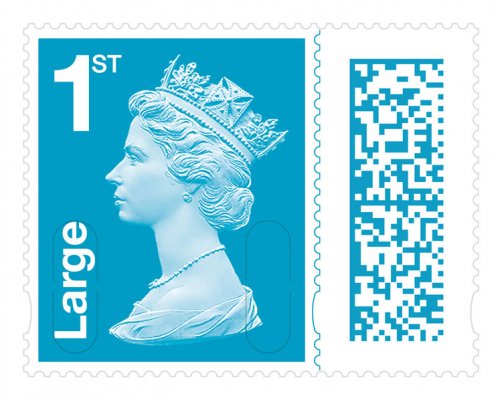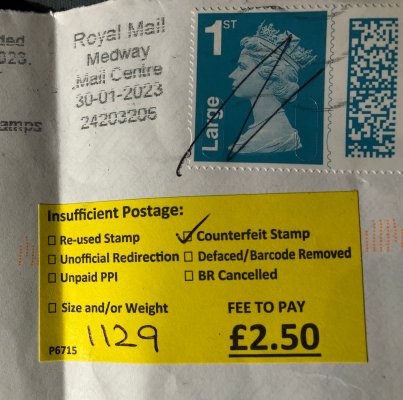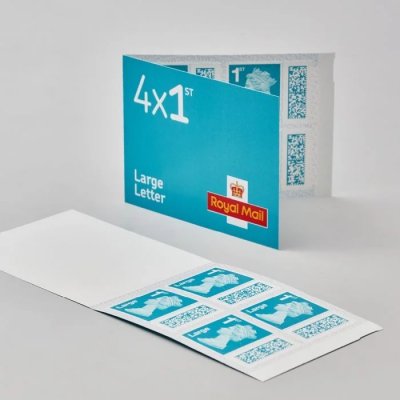The husband-and-wife forgers who fooled the art market — and made millions
The husband-and-wife forgers who fooled the art market — and made millions
Written by Oscar Holland, CNN
After decades of painting fakes, falsifying evidence and diligently covering their tracks, it was a single act of carelessness that brought the Beltracchis' deception to light. One half of the German husband-and-wife duo, Wolfgang Beltracchi, had run out of the zinc he used to create white paint for their forgery operation. He instead purchased a zinc pigment from a Dutch manufacturer who did not disclose that it contained titanium. The next year, after one of Wolfgang's creations — "Red Picture with Horses," which had been passed off as the work of expressionist artist Heinrich Campendonk — sold at auction for a record 2.8 million euros (then $3.6 million), an inconsistency emerged. Analysis of the painting found traces of the titanium, but the substance had only been used as a white pigment since the 1920s.
The work in question was supposedly made in 1914.
This discovery sparked a chain of events that would unravel a multi-million-dollar scheme that had fooled buyers and galleries around the world. Wolfgang's paintings had found their way onto
auction blocks and into private collections, including that of actor Steve Martin. The Beltracchis had even deceived expert art assessors — or, as they have since alleged, paid one of them large enough fees to effectively buy his silence. In 2011, after more than 30 years in business, Wolfgang and Helene were sentenced to six and four years in prison, respectively, though both were released early. They were also ordered to pay 35 million euros ($38 million) in damages.
Rather than forging existing paintings, Wolfgang produced hundreds of original works that skillfully imitated the styles of deceased European artists including Max Ernst, Fernand Léger, Kees van Dongen and André Derain. His wife Helene then sold them as previously undocumented works, sometimes for seven-figure sums. The pair claimed to have inherited their art collection from Helene's grandfather, who they said had acquired it from a Jewish gallerist fleeing Hitler's Germany. The story of
how their operation worked has been exhaustively detailed in news reports, a documentary and the couple's 2011 trial. But in a
recently published book, psychoanalyst Jeannette Fischer digs into the
why. Through a series of in-depth conversations, carried out over coffee and wine at the pair's studio in Switzerland following their release from prison, she explores their motives, artistic processes and family histories.
The result is a complex and compelling portrait of a man (the book primarily focuses on Wolfgang, at his wife's request) for whom forgery was a creative art form — and for whom deception became something of a game. The duo made millions of dollars, but money was only part of the appeal, Fischer argues. Although the Beltracchis lived comfortably, traveled widely and bought a home in the south of France, where they raised their children, they eschewed many of the excesses one might expect, given the huge wealth they acquired, she added.
"The forgery was almost incidental," Wolfgang told Fischer. "We enjoyed selling the paintings, we got a kick out of it, we got rich... I got to paint, and we enjoyed doing the research too. Forgery was a way of combining all these things."
'The disappearance of his identity'
The pair, along with two associates, were convicted of forging 14 artworks. Dozens more were excluded from the trial due to statutes of limitations. But they claim to have produced around 300 fakes, many of which have never been conclusively identified.
Their success was rooted in meticulous research and an obsession with detail. Taking what they called "cultural trips," the couple traveled to locations where the artists they were emulating had painted, or to see original works in museums around the world. They also immersed themselves in the artists' letters and diaries, as well as the scholarship surrounding their work. These studies informed the fake histories the pair made for their creations. Although the paintings were largely born of Wolfgang's imagination, they were often given titles of works that were known but considered lost (and of which no pictures existed), thus filling gaps in artists' oeuvres without raising suspicion. The duo purchased old frames and canvases at flea markets, and even used a 1920s camera to take old-looking photos of their creations as evidence of historical provenance. During the Beltracchis' trial, the presiding judge said the fraud had been organized "with military precision," according to
comments published by the New York Times at the time.
"They are storytellers, together, which is why they did a lot of research," Fischer told CNN in a video call. "They knew everything about the painters they forged. "I think this forms part of Wolfgang's creativity," she added. "He had to know so many things before he started to paint, and he also (produced artworks) that could have taken place in the sequence of these artists' (careers)."
Speaking to German news outlet
Der Spiegel in 2012, Wolfgang said that he mastered the styles of "about 50" deceased artists. His intensive studio practice saw him immerse himself completely in their worlds — to the extent that his own identity was lost, Fischer came to believe. "I make the connection between the disappearance of Beltracchi's name and the emotion flowing into another person," she explained, citing Wolfgang's apparent belief that, through his work, he assumed the identities of the artist he was copying. "He says of himself that he can feel the feelings of others."
In doing so, Fischer argues, Wolfgang demonstrated a remarkable capacity for empathy. He described feeling so close to the 17th-century painter Hendrick Avercamp, the first artist whose work he forged, that he felt like his brother. The forger saw himself filling a gap in the artist's back catalog, as if his creations were contributing to their original body of work. He told Fischer that he felt at home in the scenery he painted. As she elaborates in her book: "The disappearance of his identity enabled Wolfgang Beltracchi to secure his existence."
Trail of victims
This same empathy was arguably not extended to those he deceived. As well as private collectors, an unknown number of galleries and museums fell victim to the fraud — and some may still have Wolfgang's works on display.
Various experts had their reputations damaged, with one historian sued for damages (albeit unsuccessfully, according to
the Art Newspaper) after he mistakenly authenticated a forgery as the work of Max Ernst. Auction houses including Sotheby's and Christie's were duped too, with the latter even using one of the fakes on the cover of an evening sale catalog. But according to Fischer, the Beltracchis saw their crimes as essentially victimless. Wolfgang told her that he only produced pictures he considered beautiful, and he believed the owners enjoyed them as much as the art market profited from them. Today, his personal website describes his story as a "Robin Hood tale." (But unlike the folklore hero, Wolfgang does not appear to have used the proceeds of his crimes to assist the poor, telling Fischer: "I got to sit around the pool for days, reading and daydreaming and sleeping. I'd just forge a painting now and again when we needed the money.")
"They defrauded the art trade, which in their opinion was itself a fraud," Fischer said. "Everyone was greedy for the sale, and everyone earned from it — the experts, the auction houses, the couple. And in the end, we simply have to say that everyone was happy, including the buyer. If (the Beltracchis) hadn't been exposed, they would all have continued to enjoy themselves."
Yet they were exposed — and, given the limited scope of their trial, owners of many suspected fakes were left without answers and no option for seeking compensation, beyond costly civil lawsuits. In 2014, Wolfgang told CBS' "
60 Minutes" that in addition to the court-imposed damages, he had settled lawsuits worth $27 million. Fischer has remained in contact with the pair as friends. (She even dedicates the book to them in its opening pages.) She refrains from passing moral judgment, describing her role not as that of a journalist holding them to account but that of a psychoanalyst delving into the subconscious forces at play.
In particular, she explored the role Wolfgang's upbringing might have played in his decision to become a master forger. He had developed his painting skills while helping his father, who was also an artist, to restore church murals as a child. At age 12, he convincingly copied — and then added elements of his own to — an early Picasso painting, and he soon surpassed his father's abilities.
From her conversations with Wolfgang, Fischer concluded that both of his parents were "severely traumatized" by their experiences during World War II. His mother had been evacuated with her children to the German countryside, while his father had fought at Stalingrad and the Western Front, before spending four years as a prisoner of war in France. "All this suffering and trauma and pain — and also anger — was there, and all this is transmitted to the children," Fischer said, explaining that Wolfgang's parents never spoke openly of their experiences with their five offspring, of whom he was the youngest. "In such circumstances, it is almost impossible for children to grow up carefree, to not take on all these tensions that aren't talked about."
What can emerge, Fischer explained, is a form of "survivor's guilt," whereby children feel like enjoying life is a betrayal of their parents' suffering. By assuming others' identities — namely those of dead artists, whose signatures he also forged — Wolfgang could escape this emotional burden.
"He disappears, but he can still be himself... He remains autonomous, creative, rich and innocent," Fischer writes in her book. "The guilt he feels towards his parents dissolves with the disappearance of his name. A 'nobody' cannot be guilty — he does not exist, so he cannot do anything." In the years since his release, Wolfgang has created work under his own name while continuing to profit from his sensational story. He frequently appears at speaking events, and in 2021 released a series of NFTs, titled "The Greats," in which he reimagined Leonardo da Vinci's "Salvador Mundi" in the style of famous artists including Andy Warhol and Vincent van Gogh.
A promotional
video for the project suggests that, far from regretting it, the master forger is finding new ways to benefit from his past.
"Armed with over 60 years of experience... he is the only person who has the crucial knowledge and skills to pull this off," the video's narrator says, adding that the NFTs will see him "become part of history himself."




